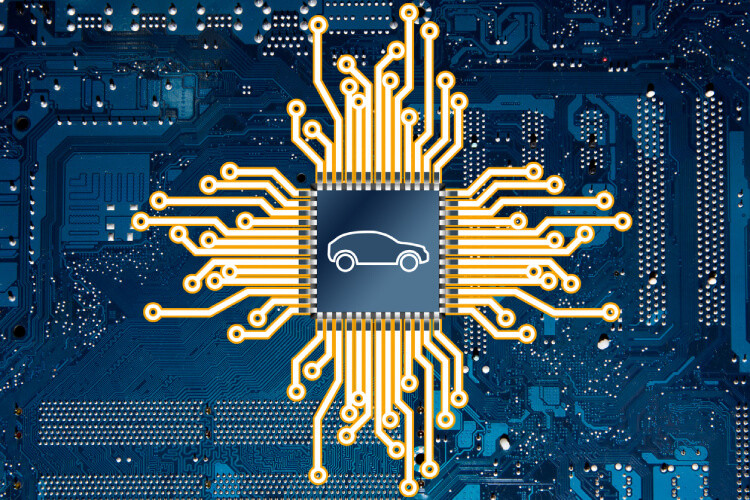Automatic Software Updates for Cars: A Four-Wheel Smartphone?
Insights | 20-11-2024 | By Paul Whytock

When it comes to the acceptance of fully autonomous cars, drivers are completely split on how they feel about the amount of vehicle control being handled by software-driven electronic systems.
Key Things to Know:
- Autonomy vs. Control: Fully autonomous vehicles rely on advanced software to handle critical driving functions, raising questions about the balance between human control and automated decision-making.
- Software Updates: These vehicles can receive over-the-air (OTA) updates, similar to smartphones, allowing manufacturers to enhance functionality, address security issues, and fix bugs remotely.
- Benefits vs. Concerns: While these updates promise improved safety, predictive maintenance, and personalisation, they also introduce challenges such as cybersecurity vulnerabilities and reduced direct human input.
- Emerging Standards: The automotive industry is navigating evolving regulations and standards, such as ISO 26262 and ISO 21434, to ensure safety and security in software-defined vehicles.
Add to that the fact that such vehicles will, via the Internet, be able to accept software updates just like a smartphone or laptop, and yet even more vehicle functionality and driving decisions are taken away from the human occupant.
But despite the human concerns, there are benefits to having software-defined vehicles, and we'll look at some of those. But it's also true to say there are some serious vehicle safety issues to be considered, along with tough questions regarding cyber security.
The Software Defined Vehicle (SDV) refers to the ability to upgrade a car via the Internet throughout its lifetime via its internal architecture, updating it and implementing new functions to enhance or improve its functionality.
So, what are the perceived benefits of vehicle software updates? Technologists are adamant that the ability to do this will increase vehicle safety, improve maintenance and service scheduling, send software patches to fix problems and/or security issues, detect potential faults before they happen, and improve vehicle specifications. These are all strong favourable reasons, although the last one may have something to do with marketing a more desirable vehicle than your automotive competitors.
The Operational Benefits
The benefits of SDV cars are numerous. These systems are fast and flexible and can be rapidly updated, particularly in critical emergency circumstances.
There is also the opportunity to analyse what the owner of the vehicle would like in relation to customising their vehicle and adding some of their personal needs on how the vehicle serves them.

From a maintenance viewpoint companies promoting the idea of software defined vehicles believe that repair, maintenance and updating of components will become more economic. Some of those companies will go as far as saying that predictive maintenance would constantly maintain the performance of vehicles to keep them running in prime condition and that ultimately this would maximise the life and value of the vehicle over a number of years.
Environmental impact, safety, and remote diagnostics are other benefits a software-defined vehicle can provide. Moreover, mobility services, e-mobility and autonomous driving will benefit from improvements in vehicle software.
Today, it is possible to make remote updates to some vehicles via the Firmware Over The Air (FOTA) system. This is the case with the EASY-LINK multimedia systems of Clio, ZOE, Captur and Arkana and OpenR Link of Mégane E-Tech Electric and Austral. This keeps the vehicle safe by making it easier and faster to improve the onboard systems and apply patches.
Tomorrow, the SDV's flexible and scalable architecture will enable the faster development and integration of new features throughout the vehicle lifecycle, directly into the cloud, that is, in secure online servers accessible from anywhere and anytime.
So all that sounds pretty positive, but the reality can, of course, be slightly different. It's clear that for some car makers there are some serious challenges that mean making the perfect "smart car" is proving a substantial challenge.
There are major design issues that require a substantial rethink of fundamental vehicle design. There is the building and implementation of new manufacturing and quality and reliability testing procedures. New component and system suppliers to the car makers will have to be established and vetted to ensure they meet critical standards.
And when it comes to industry standards, what are they.? There is considerable concern that, at present, there is insufficient regulation when it comes to recognised, established industry standards that will control software-designed vehicle manufacturers and then subsequent automatic software updating.
There is also customer concern about security risks possibilities that focus on the cyber-attack of software designed vehicles that have to be constantly Internet connected.
The Hacking Risk
Preventing the malicious hacking of SDVs is difficult because, fundamentally, they are not closed-loop environments because they rely on Bluetooth and WiFi.
A favourite strategy amongst hackers is to infiltrate the vehicle's CAN bus, FlexRay or LIN systems. The problem these days is exacerbated by the high number of software modules and systems used in modern vehicles, many of which have been developed by third party companies that have been out-sourced suppliers to the car manufacturer.
Correct software design and development process can help to minimise hacking risk and in this instance there is the ISO 26262 standard which mandates a functional safety development process from specification through to production release that automotive OEMs and suppliers must follow and document for compliance to have their devices qualified to run inside vehicles.
It outlines a risk classification system (Automotive Safety Integrity Levels, or ASILs) and aims to reduce possible hazards caused by the malfunctioning behaviour of car electrical and electronic systems. However, it does not consider software lifecycle, such as the OTA (over-the-air) update.
This is where ISO 21434 comes in. This standard relates precisely to automotive cyber security and is supported by Green Hills Software. This standard is becoming increasingly important in that many countries are adopting the UNECE World Forum for Harmonization of Vehicle Regulations automotive cybersecurity management system (CSMS) requirements and making it a legal requirement.
The framework covers cyber security management from concept, production and operation, and defines a common language for cyber security. It defines terms used in cyber security risk.
Regulations and Standards
This brings us to the gamut of standards and regulations that the automotive industry has to deal with, many of which are mandatory.
Construction standards and specifications, production methods, quality control, component supply quality assurance, component tracking, and many other aspects of vehicle manufacturing are subject to stringent regulation.
This will hit higher levels with SDVs because of the cyber security risks and the potential disasters that malicious hacking could create and as yet there remains a lot of work to be done in creating and implementing internationally recognised and accepted regulations and standards that will harmonise globally to tackle autonomous vehicle cyber security risks.
Critical areas needing these safety standards are cyber security, software development, General Data Protection Regulation (GDPR), over-the-air (OTA) software updates, Autonomous Vehicle Regulations, Liability and Insurance regulations, and component and system tracking methods.
Artificial Intelligence and SDVs
One interesting area of development for future vehicles is the role of artificial intelligence (AI) in recognising when a car is being cyber hacked.
According to cyber security solutions company for vehicle manufacturers and Tier 1 component suppliers, PlaxidityX, software anomaly detection is an important area when it comes to AI applications in automotive cyber security.

By continuously learning the standard operational behaviour and functions of a particular vehicle, AI can detect sudden changes that could flag up an alert for a potentially malicious cyber-attack.
AI would learn normal operational patterns from vehicle data sources such as ECUs, sensor inputs and in-vehicle architectures like the Controller Area Network (CAN) bus.
AI then fixes a normal operational status routine but keeps a constant alert for any unusual activities for braking, acceleration, steering, navigation and vehicle communication systems. For example, in a typical routine pattern, the CAN bus might frequently exchange messages about speed, throttle position and braking conditions. The AI system learns to expect this flow of information. According to PlaxidityX, when AI detects activity that significantly deviates from these baselines—such as unexpected commands in the CAN bus or unusual sensor readings—it flags it as an anomaly.
These anomalies could signal a range of issues, from system malfunctions to attempted cyber hacking. For instance, if an attacker injects unauthorised messages into the CAN bus to control a vehicle's braking system, AI-based anomaly detection would recognise this abnormal communication and create an alert.
AI can identify abnormal behaviour indicating malware, such as unauthorised ECU commands or spikes in network traffic. In another situation, AI might detect attempts to alter legitimate vehicle signals, such as when a hacker tries to redirect a vehicle by falsifying GPS signals. Additionally, AI-driven systems can monitor network traffic to detect unauthorised access attempts or suspicious data flows between ECUs and external networks.
What's the Cost of SDVs?
The cost of designing , developing and manufacturing SDVs doesn't come cheap and car makers are concerned about the costs involved and whether customers will accept the high prices. It's reasonable to say that even with today's electric vehicle pricing many people consider them too expensive.
So, the initial cost of a software-defined vehicle will be higher than that of a traditional vehicle. This is mainly due to the need to add more complex functions to the vehicle's architecture.
However, the new architecture of SDVs will allow for the consolidation of some components. This results in some savings because everything is centralised, and fewer cables and ECUs need to be built into the vehicle.
Precise analysis on how much could be saved in manufacturing costs is unavailable but the car makers know they have to be price competitive. They also know that just like smart phone manufacturers they have to offer products that out-smart and out-function competitors and this is where industry standards relating to manufacturing control that will assure reliability, safety and security are of paramount importance.
References
- Firmware Over The Air (FOTA) system: https://www.soracom.io
- ISO 26262 standard: https://www.synopsys.com
- Automotive Safety Integrity Levels, or ASILs: https://www.iso.org
- ISO 21434: https://www.iso.org
- UNECE World Forum for Harmonization of Vehicle Regulations automotive cybersecurity management system (CSMS): https://unece.org
- AI-based anomaly detection: https://plaxidityx.com

